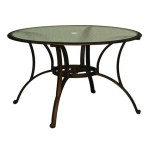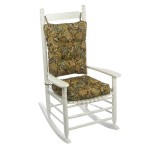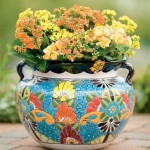How to Hang Plants Outdoors: A Comprehensive Guide
Hanging plants offer an aesthetically pleasing and space-saving solution for incorporating greenery into outdoor environments. Whether adorning a porch, balcony, or garden, suspended planters introduce visual interest and can transform otherwise underutilized spaces into vibrant havens. Successful outdoor plant hanging requires careful consideration of several factors, including selecting appropriate plants, choosing suitable hanging mechanisms, ensuring adequate support, and providing ongoing plant care. This article provides a comprehensive guide to hanging plants outdoors effectively.
Selecting Appropriate Plants for Hanging
The success of an outdoor hanging plant arrangement hinges on selecting plant species that thrive in the specific environmental conditions. Factors to consider include sunlight exposure, temperature fluctuations, wind conditions, and humidity levels. Matching the plant's needs to the environment is crucial for its health and longevity.
For locations with ample sunlight (at least six hours per day), consider plants like petunias, geraniums, calibrachoa, verbena, and trailing lantana. These sun-loving plants produce abundant blooms and cascading foliage, creating a visually striking display. They also tend to be relatively drought-tolerant, requiring less frequent watering than shade-loving varieties.
In shaded areas, opt for plants that tolerate or prefer lower light conditions. Fuchsias, begonias, impatiens, and ferns are excellent choices for shadier locations. These plants often feature vibrant foliage and delicate flowers that add color and texture to dimly lit areas. It's important to note that even shade-tolerant plants require some indirect sunlight to thrive.
Consider the mature size and growth habit of the chosen plants. Trailing varieties, such as ivy geraniums or creeping Jenny, create a cascading effect that is particularly well-suited for hanging baskets. Upright plants, such as dwarf sunflowers or petunias, can also be used, but may require more frequent pruning to maintain a desired shape.
Regional climate plays a significant role in plant selection. In regions with hot, dry summers, drought-tolerant plants are ideal. In regions with cool, wet summers, plants that tolerate excessive moisture are preferred. Always research the specific needs of each plant species before incorporating it into a hanging basket arrangement.
When combining different plant species in a single hanging basket, ensure that they have similar light, water, and nutrient requirements. This will simplify plant care and promote uniform growth. Avoid combining plants that are likely to compete for resources, such as a fast-growing vine and a slow-growing succulent.
Choosing Suitable Hanging Mechanisms and Support
The hanging mechanism and support structure are crucial for the safety and stability of outdoor hanging plants. The weight of the planter, soil, and mature plants can be considerable, particularly after watering. Selecting a robust and durable hanging mechanism is essential to prevent accidents and damage.
Various types of hanging mechanisms are available, including chains, ropes, brackets, and hooks. Chains and ropes are versatile options that can be adjusted to different lengths. Brackets are typically mounted to walls or posts and provide a secure platform for hanging baskets. Hooks can be used to suspend plants from ceilings, beams, or tree branches.
When selecting a hanging mechanism, consider the weight capacity. The mechanism should be able to support the fully saturated weight of the planter, soil, and plants, with a safety margin to account for wind and other environmental factors. Overloading a hanging mechanism can lead to breakage and potential injury.
The material of the hanging mechanism should be weather-resistant and durable enough to withstand outdoor conditions. Galvanized steel, stainless steel, and treated wood are common materials that offer good resistance to rust, corrosion, and decay. Avoid using materials that are prone to deterioration, such as untreated rope or flimsy plastic.
The support structure to which the hanging mechanism is attached must also be strong enough to bear the weight of the hanging plant. Wooden beams, sturdy posts, and reinforced walls are suitable support structures. Avoid hanging plants from weak or unstable structures, such as gutters or thin branches.
Consider using a swivel hook to prevent the hanging basket from twisting and tangling. A swivel hook allows the basket to rotate freely in response to wind, preventing the hanging mechanism from becoming damaged or strained.
Proper installation of the hanging mechanism and support structure is critical for safety. If unsure about the proper installation techniques, consult with a professional contractor or handyman. Always follow the manufacturer's instructions when installing hanging mechanisms or brackets.
Planting and Ongoing Care
Proper planting techniques and consistent ongoing care are essential for the health and vigor of outdoor hanging plants. Using high-quality potting soil, providing adequate drainage, and practicing regular watering and fertilization are crucial for promoting robust growth and abundant blooms.
Use a lightweight, well-draining potting mix formulated specifically for containers. Garden soil is too heavy and compact for hanging baskets, and can impede drainage. Choose a potting mix that contains a blend of peat moss, perlite, and vermiculite to provide adequate aeration and moisture retention.
Ensure that the hanging basket has adequate drainage holes to prevent waterlogging. Excess water in the soil can lead to root rot and other fungal diseases. If the hanging basket does not have drainage holes, drill them before planting.
When planting, gently remove the plants from their nursery containers and loosen the root ball. This will encourage the roots to spread out into the surrounding potting mix. Space the plants evenly throughout the hanging basket, allowing adequate room for growth.
Water the hanging basket thoroughly after planting, until water drains freely from the drainage holes. Allow the soil to dry slightly between waterings, but avoid letting the plants wilt. The frequency of watering will depend on the weather, the type of plants, and the size of the hanging basket.
Fertilize the hanging basket regularly with a balanced, water-soluble fertilizer. Follow the manufacturer's instructions for application rates and frequency. Regular fertilization will provide the plants with the nutrients they need to thrive and produce abundant blooms.
Prune the plants regularly to remove dead or faded flowers, and to maintain a desired shape. Pruning encourages new growth and promotes more abundant flowering. Pinch back leggy growth to maintain a compact and bushy appearance.
Monitor the plants regularly for signs of pests or diseases. Common pests that affect outdoor hanging plants include aphids, spider mites, and whiteflies. Treat infestations promptly with an appropriate insecticide or fungicide. Proper sanitation, such as removing dead leaves and debris, can help prevent the spread of pests and diseases.
Consider the weight of the hanging basket when watering. A fully saturated hanging basket can become very heavy, potentially straining the hanging mechanism or support structure. Water the plants in stages, allowing the water to drain before adding more.
In regions with harsh winters, consider bringing hanging plants indoors to protect them from frost and freezing temperatures. Alternatively, some plants can be overwintered outdoors with proper mulching and protection from wind.
Rotate the hanging basket periodically to ensure that all sides receive adequate sunlight. This will promote even growth and prevent the plants from becoming leggy or lopsided.
By following these guidelines, individuals can successfully hang plants outdoors, creating beautiful and inviting outdoor spaces. Careful planning, the selection of appropriate plants and materials, and consistent plant care will contribute to the long-term health and beauty of outdoor hanging plant arrangements.

Hanging Baskets For Your Backyard Na And Kraft Florists

Best Outdoor Hanging Plants For Spring Hgtv

16 Creative Ways To Hang A Plant Outdoors Family Handyman

The Best Outdoor Hanging Plants Love Renovations

Get The Hang Of Hanging Flower Baskets

16 Creative Ways To Hang A Plant Outdoors Family Handyman

Best Plants For Hanging Baskets The Home

Best Outdoor Hanging Plants For Spring Hgtv

Cheap And Easy Hanging Plant Basket Plants Diy Outdoor For Baskets

Iron Art Hanging Baskets Plant Holder Outdoor Flower Stand Rail Metal Fence Balcony Walmart Com
See Also








